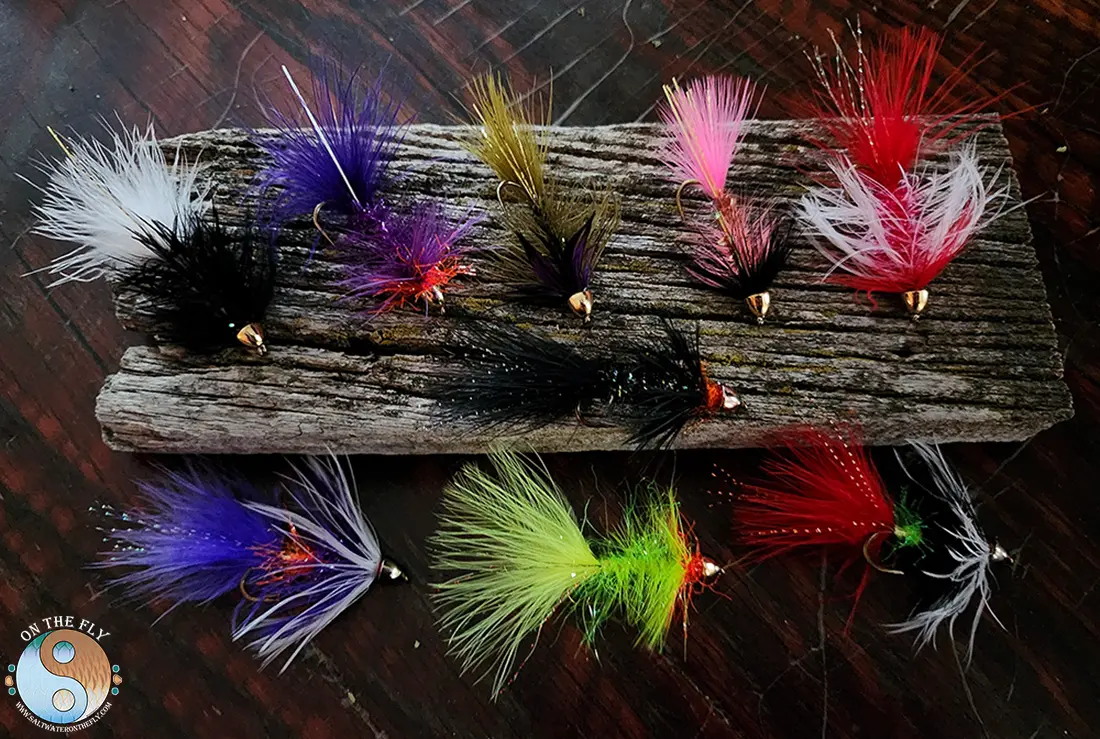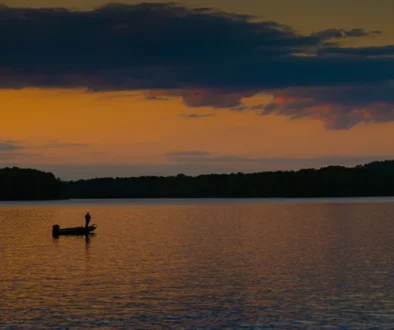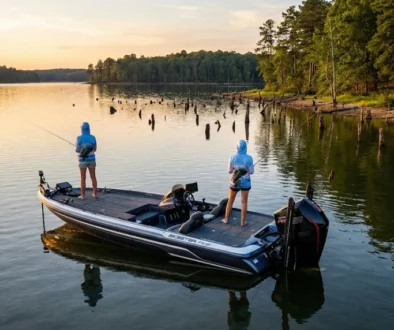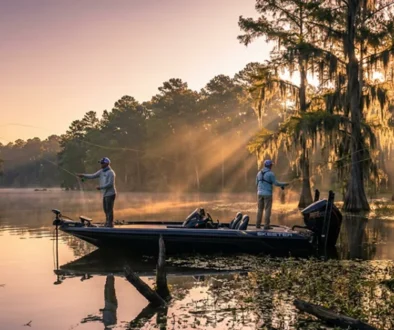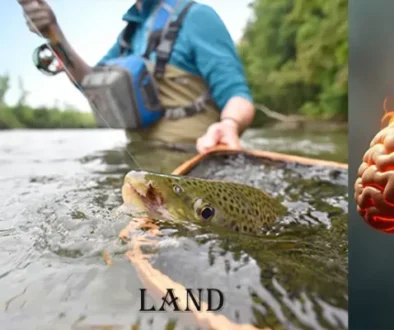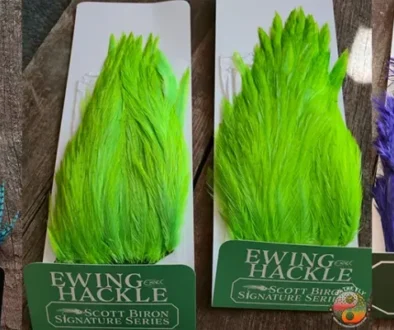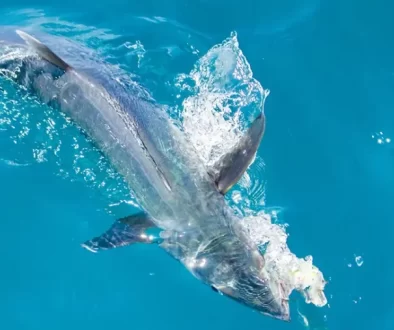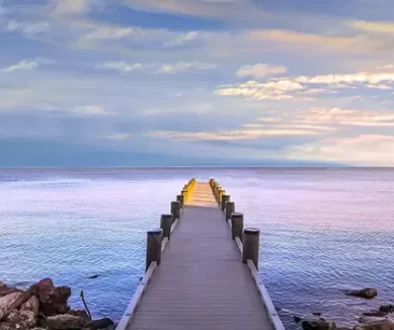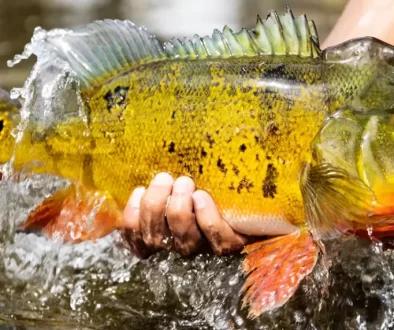Our guide to DIY Wyoming Fly Fishing
Wyoming’s sprawling terrains are not only a feast for the eyes but also an angler’s dream, teeming with spots perfect for fly fishing adventures. This guide on DIY Wyoming Fly Fishing is your ticket to mastering these waters, whether you’re aiming to hook cutthroat in Yellowstone National Park or chase brown trout down the Snake River. You’ll learn how to gear up with the essentials, navigate local regulations effortlessly, and pinpoint the best times and places for casting your line.
We break down everything from selecting the right fly rod to understanding water levels across different seasons. Additionally, uncover secrets on how to tap into the wisdom of local bait stores which can significantly boost your angling skills. So grab your fly box; it’s time to dive into Wyoming’s unmatched DIY Wyoming fly fishing opportunities. Wind River Range with lakes to backpack into or Bighorn & Wind River.
Table Of Contents:
- Exploring the Vast Waters of Wyoming for Fly Fishing
- Essential Gear for Successful Fly Fishing in Wyoming
- Navigating Wyoming’s Fishing Regulations
- When to Cast A Line – Best Times for Fly Fishing in Wyoming
- Discovering Unique Fly Fishing Experiences Across Towns
- Choosing Your Catch: Targeting Specific Species in WY Waters
- Local Wisdom: Leveraging Knowledge from Fly Shops & Guides
- Preparing for Safety & Etiquette on Your Adventure
- Mapping Your Journey: Access Points & DIY Maps
- FAQs in Relation to Diy Wyoming Fly Fishing
- Conclusion of Wyoming Fly Fishing
- Montana’s Next Door, Fly Fish A Spring Creek
Exploring the Vast Waters of Wyoming for Fly Fishing
Wyoming isn’t just about cowboys and wide-open spaces. It’s a fly fishing paradise with more water than you could explore in a lifetime. Think 27,000 miles of streams and over 4,200 lakes teeming with fish. Ready your rods; we’re casting into the heart of DIY Wyoming fly fishing.
Yellowstone National Park – A Premier Destination
The crown jewel for anglers is undoubtedly Yellowstone National Park. With seven species up for grabs including cutthroat trout that practically wink at you from the crystalline waters, it’s like stepping into an angler’s dream sequence but better because it’s real. Here’s where knowledge pays off: different parts of Yellowstone offer varied experiences – from the serenity of Firehole River to battling strong currents in Snake River.
Fishing in this national treasure means respecting its inhabitants and following regulations to a T. For all things regulation-related, check out Wyoming Fishing Regulations. Remember, every cast respects nature.
The Big/Little Laramie Rivers – Trout Haven
If solitude is what you seek alongside brown or rainbow trout as your quarry, then both Big and Little Laramie Rivers should be on your radar. These rivers are less traveled compared to their famous cousin in Yellowstone but hold treasures beneath their surfaces waiting to test your flies and patience alike.
To get started right away without guesswork involved regarding access points or best spots along these rivers visit Wyoming Fish & Game Department Fishing Guide.
Essential Gear for Successful Fly Fishing in Wyoming
You wouldn’t show up to a party underdressed; same goes for fly fishing in Wyoming—proper attire required. This includes not just any rod but one fit for conquering local behemoths plus chest waders that let you merge with waterways seamlessly (because scaring fish is no fun). And don’t forget an arsenal of dry flies designed specifically with Wyoming residents (the finned ones) in mind.

Fly Fishing Apparel with great sun protection and mobility for all the fast action of outdoor adventure. Click Image to Learn more.
Navigating Wyoming’s Fishing Regulations
Catching stories are great only if they end well—and by well I mean legally too. Know before you go because rules change faster than weather here especially when it comes down to season specifics across various locations within this expansive state which generously offers year-round opportunities given respect towards habitat conservation efforts prevails among enthusiasts. Ensure you’re current with the area’s rules and timings to ensure your escapades remain lawful. Happy fishing.
Wyoming’s vast fly fishing spots, from Yellowstone National Park to the Laramie Rivers, promise adventure and diversity. Equip yourself with the right gear and knowledge of local regulations for a successful DIY experience in this angler’s paradise.
Essential Gear for Successful Fly Fishing Wyoming
Fly fishing in Wyoming is like stepping into an angler’s dream, but without the right gear, it can quickly turn into a wader-filled nightmare. To ensure you’re casting your line with confidence and style, let’s talk about the non-negotiables: proper rods, chest waders, and a diverse selection of flies.
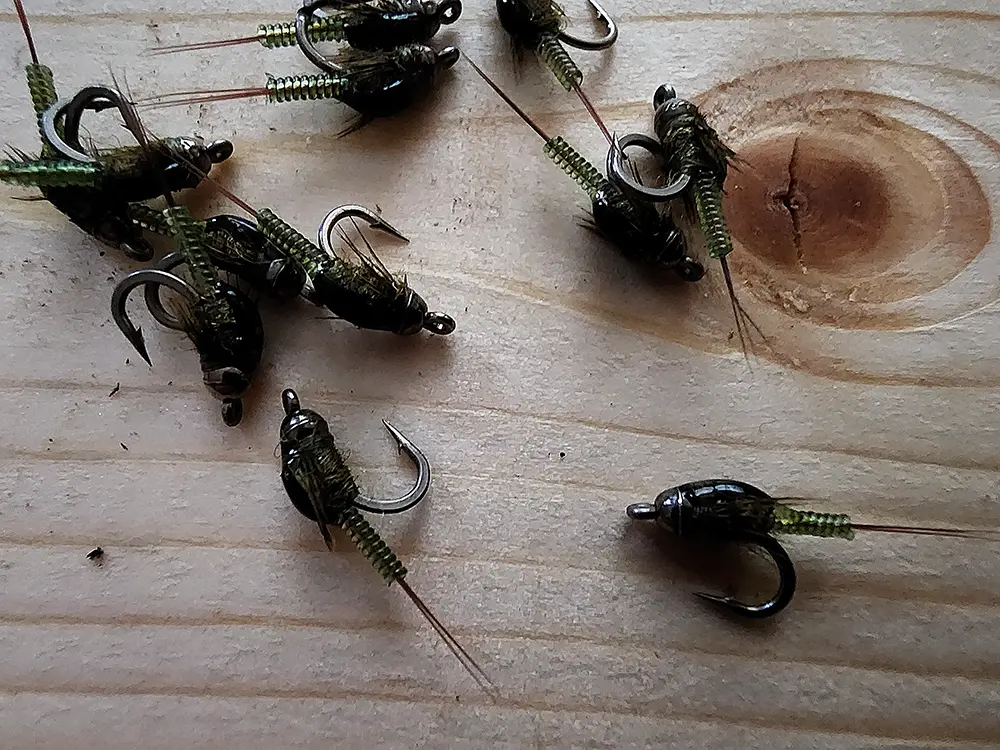
Dry Flies, Nymphs, and Streamers are great patterns for fly fishing Wyoming successfully. Click Images to Learn More.
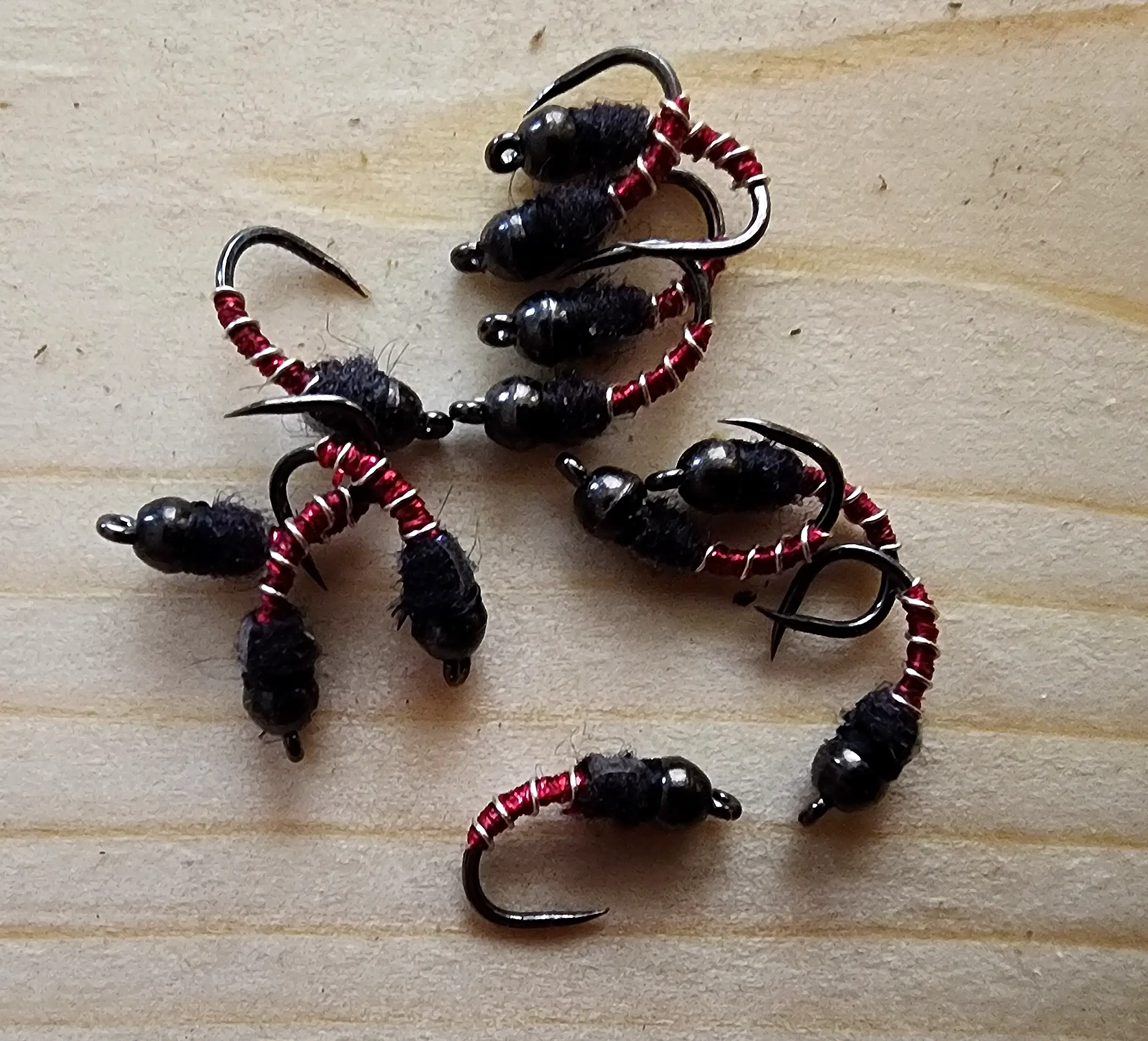
Choosing the Proper Rod for Fly Fishing
The first step to achieving fly fishing glory is selecting the right rod. In Wyoming’s vast waters—from Yellowstone National Park’s serene streams to the rugged currents of Snake River—flexibility and strength are key. A 9-foot rod that’s lightweight Fly Rods 4 to 6 weights ,yet durable makes for an ideal companion on these adventures. It offers enough length to manage complex casts but remains manageable when wrestling with feisty cutthroat trout or powerful brown trout.
When navigating through Wyoming Fish & Game Department Fishing Guide, take note of water types prevalent in your chosen destination; this will further refine your rod choice ensuring maximum compatibility between tackle and terrain.
Chest Waders for Navigating Diverse Water Conditions
Nobody likes soggy socks—especially not while standing mid-river as a cold front rolls in over Grand Teton National Park. This is where high-quality chest waders come into play. They’re not just waterproof trousers; they’re your first defense against hypothermia. Breathable yet impenetrable by water, good chest waders keep you dry from thigh-deep excursions on Laramie River to stealthy shoreline approaches along Firehole River.
A pro tip? Look for models with built-in boots (bootfoot) or ones that allow snug fitting footwear (stockingfoot), depending on whether speed or stability ranks higher on your priority list during those long days chasing elusive golden trout across varying terrains.
The Art of Selecting Flies: Matching The Hatch
Your fly box should be as varied as Wyoming’s landscapes—with every size, shape, color imaginable ready at hand because here’s where things get tricky: fish are picky eaters sometimes. From spring hatches bringing forth swarms of mayflies along Wind River Range to late summer caddis outbreaks near Grey Reef—the rule ‘match the hatch’ never rang truer than in these prolific fishing grounds.
To start off strong, particularly if DIY fly tying feels daunting, explore local fly shops before heading out onto Tongue River or any other pristine body of water within state lines. Opting for this strategy not only bolsters community enterprises but also equips you with customized guidance and wisdom, particularly suited to the unique characteristics of your selected angling location. So, make sure to drop by your nearest shop for a chat; you’ll likely leave better prepared and more confident in your angling adventure.
Step into Wyoming’s fly fishing scene prepared: Choose a flexible, strong rod and waterproof chest waders. Don’t forget a diverse fly selection to match local hatches. Drop by local shops for gear tailored to specific spots and expert tips.
Navigating Wyoming’s Fishing Regulations
Wyoming’s fishing scene, alive with possibilities every day of the year, invites anglers to immerse themselves in its waters whenever they feel the call. But don’t let the endless seasons fool you; staying on the right side of the law means understanding fishing regulations in Wyoming. So, before you gear up and head out, here’s what every angler needs to know.
Why Local Laws Matter Wyoming Fly Fishing
Ever wonder why one river allows you to keep your catch while another insists on catch and release? It’s all about balance. Wyoming’s fishing regulations are designed to maintain thriving fish stocks for future anglers’ enjoyment. Different rules kick in at distinct times and locales, aiming to protect different fish types when they’re most vulnerable, such as during their breeding season. Ignorance isn’t bliss when it leads to fines or worse—a revoked fishing license.
To avoid becoming “that person” who ruins it for everyone else, a quick review of Wyoming fishing regulations is not just recommended—it’s essential. These laws are meticulously crafted by folks who study fish more than most people watch Netflix. They’re designed not only to protect aquatic life but also enhance your fishing experience.
Finding Your Perfect Spot: Public vs Private Waters
The first step in planning your DIY fly-fishing adventure is distinguishing between public access points and those requiring permission (aka private access). You might think sneaking onto someone’s land gives your story an adventurous edge—until you’re explaining yourself to local law enforcement. Fortunately, finding legal spots doesn’t require secret knowledge or handshake deals with locals.
A smart move is checking out maps detailing public access points alongside prime locations teeming with trout or whatever species tickles your fancy this season—information readily available through resources like the Wyoming Fish & Game Department Fishing Guide.
Licensing Up: Don’t Leave Home Without It.
No matter how stealthy or skilled an angler you are, there’s no getting around this simple truth: if you want to fish in Wyoming waters legally—you need a valid fishing license. Far from being a mere bureaucratic desire, obtaining this license plays a pivotal role in funding initiatives that maintain our waterways as bustling habitats teeming with an abundance of gamefish.
Purchasing a license can be done quicker than brewing morning coffee—all from the comfort of home via
our user-friendly website. Let’s make getting started as simple as possible, guiding you every step of the way.
Before hitting Wyoming’s waters, brush up on local fishing laws to avoid fines and protect fish populations. Know the difference between public and private access points, and don’t forget—no license means no fishing.
When to Cast A Fly Line – Best Times for Fly Fishing in Wyoming
Finding the perfect moment to fly fish in Wyoming is like trying to catch a glimpse of a shooting star; timing is everything. Wyoming’s expansive terrains and shifting climates play a pivotal role in determining the prime times and locales for angling adventures. Let’s unpack the seasonal insights that will help you plan your trip around weather conditions and fish activity levels throughout the year.
Spring into Action
As winter thaws, rivers swell with snowmelt, making spring an adventurous time for fly fishing. While water levels can be high and challenging, it’s also when trout become more active after a long winter. By late May or early June, as temperatures rise but before runoff peaks, anglers have excellent opportunities to land rainbow trout eager for mayflies or caddisflies.
To navigate these waters safely and legally, familiarize yourself with local regulations, which might include specific catch-and-release areas or bait restrictions during this season.
Sizzling Summer Prospects
The summer months bring warm days and cool nights—a recipe for ideal fly-fishing conditions across most of Wyoming’s streams and lakes. This period marks some of the best dry-fly fishing of the year, especially from July through September when aquatic insect hatches are at their peak. During these months, locations such as Yellowstone National Park offer unparalleled access to cutthroat trout amidst breathtaking scenery.
If solitude is what you seek in your summer adventure, explore lesser-known spots where both golden trout and mountain whitefish play hard-to-get at higher elevations under endless blue skies.
Fall: A Seasonal Symphony Wyoming Fly Fishing
Come fall, forests explode in color just as brown trout begin their spawning runs—turning already stunning backdrops into jaw-dropping vistas worthy of any angler’s Instagram feed. Water temperatures start dropping by early October; however, this signals brown trout and brookies to aggressively feed, making them easier targets than during other times of the year. Tuning into the shifts in water heights offers an opportunity to revel in peak fly fishing moments before the chill of winter makes its return. It’s also a good idea to check with local fly shops for specific recommendations on fly selection and stream conditions.
Don’t forget your warm gear as temperatures can dip quickly.
Wyoming Fly Fishing Tip:
Finding the perfect time to fly fish in Wyoming depends on understanding seasonal patterns. Spring offers high waters and active trout, summer promises ideal conditions with peak insect hatches, and fall brings aggressive feeding before winter. Each season has its unique charm and challenges, so plan accordingly for a successful trip.
Discovering Unique Fly Fishing Experiences Across Towns
Wyoming is not just a state; it’s an experience, especially for those who are passionate about fly fishing. In each town, from Casper’s lively avenues to the serene currents of the South Tongue River, anglers find themselves embarking on distinctive quests.
Casper’s Thriving Scene
In Casper, you’re in for more than just casting lines into the North Platte River. In Casper, your angling adventure is elevated by a lively atmosphere and unique experiences such as bespoke fishing pole crafting sessions available in Sheridan. Imagine holding a rod that’s been crafted by your own hands as you wade through the waters – now that’s something special.
Casper opens the door to Wyoming’s treasured streams, where eager rainbow and brown trout are just waiting for your lure to dance above them. The diversity doesn’t end there; venture out to Whiskey Mountain Conservation Camp near Dubois for family-oriented camps focused on conservation and outdoor skills – perfect for introducing younger generations to our beloved sport.
Laramie & Rock Creek – A Trout Paradise
Moving towards Laramie brings us closer to hidden gems like Rock Creek. Here lies an angler’s paradise where cutthroat trout play hard-to-get among serene landscapes reminiscent of old Western films (minus any duels). It isn’t all cowboy country though; within this rugged terrain lie modern challenges such as understanding local regulations which can be found at Wyoming Fishing Regulations. Mastering these laws ensures both respect towards nature and legality during your excursions.
The essence of DIY Wyoming fly fishing truly shines through when exploring towns across this expansive state. Each location presents its own set of species targeted by specific techniques – from dry flies dancing on surface waters in early July high elevations, streamer tactics deployed against aggressive mountain whitefish or stalking elusive golden trout within remote sections at peak summer months around Teton Wilderness areas including Grand Teton National Park.
Dubois – Family Adventures Await Wyoming Fly Fishing
Last but certainly not least is Dubois: home base for adventurers looking forward toward engaging with wilderness while maintaining familial bonds over shared passions such as conservation efforts showcased at Whiskey Mountain Conservation Camps tailored specifically families interested preserving natural habitats future generations enjoy together harmoniously amidst breathtaking sceneries provided Mother Nature herself.
Wyoming offers a unique fly fishing adventure in every town, from custom rod building in Casper to conservation camps in Dubois. Dive into diverse experiences and connect with nature across this angler’s paradise.
Choosing Your Catch: Targeting Specific Species in WY Waters
In Wyoming, the rivers and lakes are teeming with an eclectic mix of aquatic life, offering fishing enthusiasts a dreamy haven for snagging that unique catch. With over 22 different species available, including the likes of yellow perch, walleye, brown trout, and golden trout just to name a few, knowing what you’re after can greatly enhance your fly fishing adventure.
Yellowstone National Park – A Premier Destination
The iconic Yellowstone National Park isn’t just about geysers and breathtaking landscapes; it’s also home to seven prime game fish species. From cutthroat trout that make an angler’s heart race to mountain whitefish that test your finesse on the fly rod, each species offers its own unique challenge. Planning your visit? Make sure you check out Wyoming Fish & Game Department Fishing Guide, as this resource is jam-packed with info on where these elusive creatures like to hide.
Fly fishing in Yellowstone during early July or high elevations means encountering fewer people but remember – bear country rules apply. Safety first always makes for happier tales back at the local fly shop.
The Big/Little Laramie Rivers – Trout Haven
If chasing after brown trout or rainbow trout gets your reel spinning then directing your compass towards The Big/Little Laramie Rivers might be exactly what you need. These rivers boast abundant populations of both species thanks largely due to careful management practices and pristine environments they call home.
To get started on this aquatic journey don’t forget essentials such as proper rods and chest waders which could very well make or break your trip. Keen on boosting your catch numbers? Dive into the vibrant community at a local Shop.
Navigating Wyoming’s Fishing Regulations
Bear in mind folks; while we all love us some good ol’ fashion catching fun under sun (or rain), adhering strictly to fishing regulations in Wyoming ensures sustainable enjoyment for generations yet unborn—plus keeps those pesky fines at bay. Seasons vary across locales within state lines thus brushing up latest laws prior setting sail comes highly recommended.
When To Cast Your Line – Best Times For Fly Fishing In Wyoming
Well for me fall is my favorite, early spring streamer fun. Dries late spring through fall, days can be what legends are made of.
Dive into Wyoming’s rich waters, home to 22 fish species and prime spots like Yellowstone National Park and the Laramie Rivers. Before you cast your fly line, brush up on regulations for a fun and fine-free adventure. .
Local Wisdom: Leveraging Knowledge from Fly Shops & Guides
Fly fishing transcends mere casting; it’s a craft enriched by community lore and heritage. And who better to learn this art from than the masters themselves? Yes, we’re talking about local fly shops and guides.
Why Local Fly Shops Are Your Secret Weapon
The importance of engaging with recommended fly shops cannot be overstated. These are places where passion meets expertise. Imagine them as the portal through which you grasp the harmonious interplay between Wyoming’s waterways and its secretive water dwellers. They offer invaluable insights into regional conditions, which can drastically alter techniques required on any given day.
Hiring a Guide – The Fast Track To Expertise
If reading water was easy, everyone would be doing it successfully—but alas. Herein lies the value of hiring a guide when diving into Wyoming fly fishing adventures. Do your home to find Guides that have spent countless hours deciphering these waters’ secrets so you don’t have to start from scratch.
Beyond offering immediate help navigating through challenging terrains or tricky weather conditions (which let’s face it—Wyoming has plenty), they tailor their approach based on your skill level and interests making sure every moment by the river counts towards improving your technique or landing that dream catch.
Tapping Into Community-Driven Resources
The beauty of immersing yourself in locales renowned for their fly-fishing culture goes beyond individual achievements—it connects you with a community equally passionate about preserving these traditions while embracing new anglers into their fold.
Whether attending workshops hosted by local experts or participating in conservation efforts led by organizations within this space, each interaction enriches your understanding of why areas like Yellowstone National Park remain premier destinations year after year despite changing environmental pressures.
In essence, leveraging wisdom from both shops and guides ensures not only personal growth but also contributes toward sustaining environments enabling future generations enjoy similar experiences long after our waders have dried off one final time.
Wyoming Fly Fishing Tip:
Tap into local fly shops and guides in Wyoming for insider tips, tailored advice, and a fast track to mastering the art of fly fishing. They’re your secret weapon to understanding the water, improving your technique, and connecting with a community that shares your passion.
Preparing for Safety & Etiquette on Your Adventure
Fly fishing Wyoming isn’t just about casting your line into the vast, serene waters—it’s also about doing so safely and respectfully. Whether you’re knee-deep in the Snake River or exploring the secluded banks of the Wind River Range, knowing how to engage with nature and fellow anglers can make all the difference.
Safety Tips & Bear Awareness
First off, let’s talk bear safety because yes, those furry giants do roam our favorite fly-fishing spots. Making noise while hiking to your chosen spot helps avoid surprise encounters. Also, storing your catch and food properly is non-negotiable—bears have a fantastic sense of smell. For more detailed guidelines on staying safe in bear country during your fishing trip, check out these tips from Wyoming Fish & Game Department Fishing Guide.
Moving beyond our four-legged friends, remember that water levels and conditions can change rapidly. Always wear chest waders for protection against cold water temperatures and use a staff for stability when navigating slippery rocks.
Leave No Trace Principles While Wyoming Fly Fishing
We all love Wyoming’s pristine wilderness; let’s keep it that way by following Leave No Trace principles. Pack out what you pack in—including tangled lines or old flies—and be mindful not to trample vegetation along riverbanks. These practices ensure that our fly-fishing havens remain beautiful for generations of anglers to come. To dive deeper into how you can minimize your impact on these natural habitats, explore the comprehensive guidelines provided by Wyoming Fishing Regulations.
Respecting Private Property
Last but certainly not least is respecting private property—a crucial part of ethical angling etiquette. Access points are there for a reason: they guide us toward public areas where we’re free to enjoy our sport without encroaching on someone else’s land. If you’re unsure whether an area is open to public fishing, visit this resourceful link: DIY Fly Fishing Map, a handy tool for planning routes that respect boundaries.
Remembering these key points will help ensure both safety and mutual respect among anglers as well as between humans and wildlife:
Fly fishing in Wyoming means more than just casting a line; it’s about staying safe and showing respect. Keep bears at bay with noise, protect yourself with chest waders, follow Leave No Trace principles to preserve nature, and always respect private property. These tips ensure fun and respectful adventures.
Mapping Your Journey: Access Points & DIY Maps
Finding your way to the heart of Wyoming’s fly fishing paradise means having a solid game plan. Knowing where public and private access points are can make or break your day on the water. But don’t worry, we’ve got you covered with some insider tips and tricks to get you casting in no time.
Public vs Private Access: Navigating the Waters
The first step is distinguishing between public and private access points. Public spots are everyone’s playground but remember, they can get crowded, especially during peak season. On the flip side, private waters offer serene environments but require permission or fees for access. To avoid any unwelcome surprises, check out resources like Wyoming Fish & Game Department Fishing Guide, which provides comprehensive details on accessing various fishing destinations across Wyoming.
To give you an edge over other anglers and ensure a successful day by the water it’s crucial to understand that there are 27,000 miles of streams and 4,200 lakes teeming with fish waiting for your lure. However, getting lost is not part of today’s agenda. So let us dive into how mapping tools can be your best friend in this wild adventure.
Drawing Your Own Map: The Ultimate DIY Fly Fishing Guide
In an age where technology sits snugly at our fingertips; why not leverage it? Start with digital maps—Google Earth is a fantastic tool that lets adventurers zoom into potential hotspots before even setting foot outdoors. Pairing satellite imagery with local knowledge from nearby fly shops could unveil hidden gems often overlooked by others.
If old-school paper maps sound more appealing (because sometimes tech just doesn’t cut it), visiting local fly shops for custom-created maps isn’t only smart—it’s essential for those seeking off-the-beaten-path experiences. Visit other local businesses, ask questions and listen.
This blend of modern tech savvy paired with traditional methods ensures that whether aiming for big Laramie River brown trout or Snake River cutthroat trout—the dream catch won’t just remain a figment of imagination anymore.
In wrapping things up here—without jumping to conclusions because, you know, rules are more like guidelines—we encourage you to dive headfirst into the subject. Embracing this method, we wander freely, unconfined by rigid boundaries. Thus, we shall continue our dialogue and discover the destinations this voyage may unveil.
Unlock the secrets of Wyoming’s fly fishing spots with insider tips on public and private access, plus how to use digital maps and local intel for a successful day by the water. Dive into mapping your adventure with tech and tradition.
FAQs in Relation to DIY Wyoming Fly Fishing
What is the best month for fly fishing in Wyoming?
September shines as the top pick. Cooler temps stir fish into a feeding frenzy, making them more eager to bite.
What weight fly rod for Wyoming?
A 5-weight rod hits the sweet spot. It’s versatile enough for most trout without sacrificing feel or control.
What flies to use for trout in Wyoming?
You can’t go wrong with nymphs and streamers. They mimic local bugs and baitfish, tempting even wary trout.
Is Wyoming good for fly fishing?
Absolutely. With its sprawling rivers and abundant fish species, it’s a dream destination for anglers chasing their next big catch.
Conclusion of Wyoming Fly Fishing
Embarking on DIY Wyoming Fly Fishing means gearing up with the right rods and waders. Setting out to fish with a fly in Wyoming requires not just the proper equipment but also an understanding of local regulations to ensure respectful angling amidst breathtaking landscapes.
Dive into the heart of Yellowstone or cast a line in the serene Laramie Rivers. You’re not just fishing; you’re connecting with nature’s finest scenes.
Talk to local experts, leverage their insights for that golden catch. Remember, every fly shop visit can unlock secrets of the streams.
Finally, safety first – bear country demands respect, as do fellow anglers and private lands. Embrace Leave No Trace principles; they make your adventure sustainable.
You’ve got this! Discover the endless expanses ready for your discovery, offering memories to capture and stories that will echo in your heart long after you return
Montana’s Next Door, Fly Fish A Spring Creek
Or find some place secluded. Fly Fish Fortress Lake or Fly Fish Iceland, some of the worlds best fly fishing.

